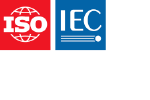Résumé
ISO/IEC 18025:2014 provides mechanisms to specify unambiguously objects used to model environmental concepts. To accomplish this, a collection of nine EDCS dictionaries of environmental concepts are specified:
- classifications: specify the type of environmental objects;
- attributes: specify the state of environmental objects;
- attribute value characteristics: specify information concerning the values of attributes;
- attribute enumerants: specify the allowable values for the state of an enumerated attribute;
- units: specify quantitative measures of the state of some environmental objects;
- unit scales: allow a wide range of numerical values to be stated;
- unit equivalence classes: specify sets of units that are mutually comparable;
- organizational schemas: useful for locating classifications and attributes sharing a common context; and
- groups: into which concepts sharing a common context are collected.
A functional interface is also specified.
As denoting and encoding a concept requires a standard way of identifying the concept, ISO/IEC 18025:2014 specifies labels and codes in the dictionaries.
ISO/IEC 18025:2014 specifies environmental phenomena in categories that include, but are not limited to, the following:
- abstract concepts (e.g., absolute latitude accuracy, geodetic azimuth);
- airborne particulates and aerosols (e.g., cloud, dust, fog, snow);
- animals (e.g., civilian, fish, human, whale pod);
- atmosphere and atmospheric conditions (e.g., air temperature, humidity, rain rate, sensible and latent heat, wind speed and direction);
- bathymetric physiography (e.g., bar, channel, continental shelf, guyot, reef, seamount, waterbody floor region);
- electromagnetic and acoustic phenomena (e.g., acoustic noise, frequency, polarization, sound speed profile, surface reflectivity);
- equipment (e.g., aircraft, spacecraft, tent, train, vessel);
- extraterrestrial phenomena (e.g., asteroid, comet, planet);
- hydrology (e.g., lake, rapids, river, swamp);
- ice (e.g., iceberg, ice field, ice peak, ice shelf, glacier);
- man-made structures and their interiors (e.g., bridge, building, hallway, road, room, tower);
- ocean and littoral surface phenomena (e.g., beach profile, current, surf, tide, wave);
- ocean floor (e.g., coral, rock, sand);
- oceanographic conditions (e.g., luminescence, salinity, specific gravity, turbidity, water current speed);
- physiography (e.g., cliff, gorge, island, mountain, reef, strait, valley region);
- space (e.g., charged particle species, ionospheric scintillation, magnetic field, particle density, solar flares);
- surface materials (e.g., concrete, metal, paint, soil); and
- vegetation (e.g., crop land, forest, grass land, kelp bed, tree).
Informations générales
Note: Cette norme est mise à jour par une autorité de mise à jour ou un organisme d'enregistrement
-
État actuel: PubliéeDate de publication: 2014-02Stade: Norme internationale confirmée [90.93]
-
Edition: 2
-
Comité technique :ISO/IEC JTC 1/SC 24ICS :35.140
- RSS mises à jour
Cycle de vie
-
Précédemment
AnnuléeISO/IEC 18025:2005
-
Actuellement
PubliéeISO/IEC 18025:2014
Les normes ISO sont réexaminées tous les cinq ans
Stade: 90.93 (Confirmée)

